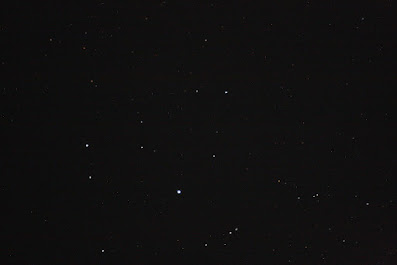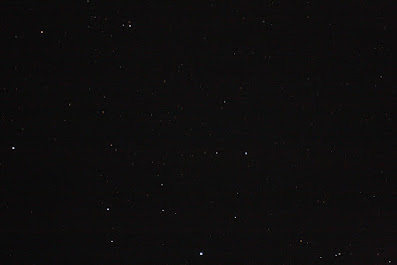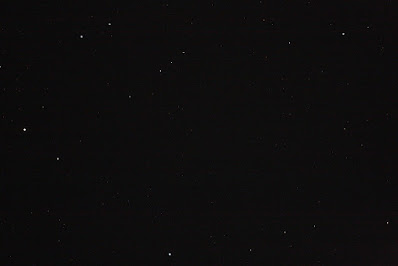Tuesday, June 30, 2020
spotted Canadian content
Monday, June 29, 2020
noted Stellarium 0.20.2 shortcuts
Performed testing with Stellarium 0.20.2 on Windows 10.
This is an update of my keyboard and mouse shortcuts listing. This reference is for Windows and Macintosh computers.
The "notes" column to the far right with numbers are keyed to the footnotes. For example, 1 is used to indicate newly added or recently changed items.
controlling the surroundings | * | ||||
show Location window | F6 | Fn F6 | 4 | ||
toggle cardinal compass points | — | q | — | q | |
toggle ground and buildings | g | g | |||
toggle ground fog | f | f | |||
toggle atmosphere or air | a | a | |||
toggle sky glow/building lights | Shift g | Shift g | |||
ground (mountain) labels | Ctrl Shift g | ⌘ Shift g | |||
return to "home" (start-up) view | Ctrl h | (none) | 2 | ||
controlling the sky - deep sky | |||||
toggle stars | s | s | |||
toggle star labels | Alt s | Option s | |||
toggle constellation lines | c | c | |||
toggle constellation boundaries | b | b | |||
toggle constellation labels | v | v | |||
toggle constellation artwork | r | r | |||
toggle asterism lines | Alt a | Option a | |||
toggle asterism labels | Alt v | Option v | |||
toggle ray helpers | Alt r | Option r | |||
toggle DSO/nebula labels | n or d | n or d | |||
nebula background images | i | i | |||
toggle quasars | Ctrl Alt q | ⌘ Option q | 3, 5 | ||
toggle zodiacal light | Ctrl Shift z | ⌘ Shift z | |||
toggle Milky Way | m | m | |||
toggle digital sky survey | Ctrl Alt d | ⌘ Option d | 6 | ||
exoplanet labels, indicators | Ctrl Alt e | ⌘ Option e | 5 | ||
show Sky and Viewing Options | F4 | Fn F4 | |||
single constellation mode | |||||
remove previous constellations | w | w | 7 | ||
show all constellations | Alt w | Option w | 1 | ||
the sky - solar system | |||||
toggle planets and Moon | p | p | |||
toggle planet and Moon labels | Alt p | Option p | |||
toggle planet markers | Ctrl p | ⌘ p | |||
toggle planet orbits | o | o | |||
toggle star-lore planet names | Ctrl Shift n | ⌘ Shift n | |||
toggle planet trails | Shift t | Shift t | |||
toggle planet surface labels | Alt n | Option n | 9 | ||
toggle meteor radiants | Ctrl Shift m | ⌘ Shift m | |||
toggle meteor radiant labels | Shift m | Shift m | |||
controlling lines | |||||
toggle altitude/azimuth grid | z | z | |||
toggle equatorial grid | e | e | |||
toggle ecliptic line | , (comma) | , | |||
toggle celestial equator | . (period) | . | |||
toggle meridian line | ; | ; | |||
toggle horizon line | h | h | |||
changing image presentation | |||||
flip horizontally | Ctrl Shift h | ⌘ Shift h | |||
flip vertically | Ctrl Shift v | ⌘ Shift v | |||
equatorial or azimuthal mode | Ctrl m | ⌘ m | |||
look to east (or n, w, s) | Shift e | Shift e | |||
look up to zenith | Shift z | Shift z | |||
look to NCP | Alt Shift n | Option Shift n | |||
look to SCP | Alt Shift s | Option Shift s | |||
zooming | |||||
zoom in | PgUp or Ctrl Up Arrow | Fn Up Arrow | |||
zoom out | PgDn or Ctrl Dn Arrow | Fn Down Arrow | |||
zoom in or out slowly | Shift with keys | Shift with keys | |||
quickly zoom in/out | mouse wheel | mouse wheel | |||
zoom close to selected object | / (slash) | / | |||
zoom out fully | \ (backslash) | \ | |||
zoom very close to planet | / twice | / twice | |||
set field of view (FOV) to 180° | Ctrl Alt 1 | (none) | |||
set FOV to 90° | Ctrl Alt 2 | (none) | |||
... through ... | ... | ... | |||
set FOV to 2° | Ctrl Alt 8 | (none) | |||
set to 1° | Ctrl Alt 9 | (none) | |||
to ½° | Ctrl Alt 0 | (none) | |||
panning | |||||
quickly pan celestial sphere | left-drag | drag | |||
pan right | Right Arrow | Right Arrow | |||
pan left | Left Arrow | Left Arrow | |||
pan up | Up Arrow | Up Arrow | |||
pan down | Down Arrow | Down Arrow | |||
pan a small amount | Shift Arrow-key | Shift Arrow-key | |||
controlling time flow | |||||
set date/time to now | 8 | 8 | |||
set time rate to zero | 7 | 7 | |||
increase time flow | l (lower case L) | l | |||
decrease time flow | j | j | |||
run time at normal rate | k | k | |||
increase time flow a little | Shift l (that's L) | Shift l | |||
decrease time flow a little | Shift j | Shift j | |||
drag for time | Ctrl drag | Control drag | 10 | ||
flip time direction | 0 (zero) | 0 (zero) | 1 | ||
time with mouse wheel | |||||
increase/decrease by minutes | Ctrl | ⌘ | |||
increase/decrease by hours | Ctrl Shift | ⌘ Shift | |||
increase/decrease by days | Ctrl Alt | ⌘ Option | |||
increase/decrease by years | Ctrl Alt Shift | (none) | |||
controlling "regular" time | |||||
show date/time window | F5 | Fn F5 | |||
forward 1 hour solar | Ctrl = (equal) | ⌘ = | |||
backward 1 hour | Ctrl - (hyphen) | ⌘ - | |||
forward 1 day solar | = (equal) | = | |||
backward 1 day | - (hyphen) | - | |||
forward 1 week solar | ] | ] | |||
backward 1 week | [ | [ | |||
controlling sidereal time | |||||
forward 1 day sidereal | Alt = (equal) | Option = | |||
backward 1 day | Alt - (hyphen) | Option - | |||
forward 1 year sidereal | Ctrl Alt Shift ] | ⌘ Option Shift ] | |||
backward 1 year | Ctrl Alt Shift [ | ⌘ Option Shift [ | |||
working with objects | |||||
select an object | left-click | click | |||
centre on selected object | spacebar | spacebar | |||
toggle tracking of object | t | t | |||
| deselect object | right-click or | ⌘-click or | 1 | ||
display search dialogue box | Ctrl f or F3 | ⌘ f or Fn F3 | |||
go, i.e. travel, to a planet | Ctrl g | ⌘ g | |||
toggle angular measurement | Ctrl a | ⌘ a | 5 | ||
copy object info to clipboard | Ctrl Shift c | ⌘ Shift c | 1 | ||
add custom marker | Shift click | Shift click | |||
remove custom marker | Shift right-click | Control Shift click | |||
remove all custom markers | Alt Shift right-click | Opt. Ctrl. Sh. click | |||
working with satellites | 5 | ||||
configure artificial satellites | Alt z | Option z | |||
toggle satellite display or "hints" | Ctrl z | ⌘ z | |||
toggle satellite labels | Alt Shift z | Alt Shift z | |||
controlling the screen | |||||
toggle night (red light) mode | Ctrl n | ⌘ n | |||
toggle full-screen mode | F11 | F11 | 8 | ||
toggle toolbars/menus, i.e. GUI | Ctrl t | ⌘ t | |||
save screenshot to disk | Ctrl s | ⌘ s | |||
toggle planet selection marker | Ctrl Shift p | ⌘ Shift p | |||
close a window/dialogue box | Esc | Esc | |||
controlling the application | |||||
show configuration window | F2 | Fn F2 | |||
show help/about window | F1 | Fn F1 | |||
show script console window | F12 | (none) | |||
keyboard shortcuts window | F7 | Fn F7 | |||
show Astro. Calc. window | F10 | Fn F10 | |||
show Bookmarks window | Alt b | Option b | |||
show Exoplanets config window | Alt e | Option e | 5 | ||
show meteor settings window | Ctrl Alt Shift m | ⌘ Option Shift m | 5 | ||
show meteor search window | Ctrl Alt m | ⌘ Option m | 5 | ||
quit from Stellarium | Ctrl q | ⌘ q |
Notes:
- Recently added or changed shortcuts.
- On the Mac, the shortcut ⌘ h hides the app. This is an operating system shortcut.
- On the Mac, the shortcut ⌘ Shift q causes Stellarium to quit.
- The operation of function keys on both Windows and Mac computers may require the use of a function or Fn key.
- Keyboard shortcuts associated with a plug-in. They may not function if the plug-in is not active.
- The digital sky survey layering feature refers to the display as a "hierarchical progressive" sky survey.
- The "remove" constellation shortcut applies when "single constellation mode" is active, as triggered in Configuration, Tools.
- The F11 does not work on iMac 21.5 and 2011 wireless keyboard.
- Referred to as surface "nomenclature" labels. This marks detailed surface features on planets, for example, Olympus Mons on Mars.
- On the Mac, only works when mouse is dragged horizontally. Only changes seconds.
Some shortcuts were omitted. Notably those for the oculars plug-in. And those to do with scripting.
Finally, of course, Mac documentation and keyboard labelling is inconsistent. We note the symbols below:
⌘ (cloverleaf) is the Command key,
with the apple symbol on very old systems
⌃ (carat) is the Control key
⌥ is the Option (alt) or alternate key
⇧ (up arrow) is the Shift key
⇪ (up arrow with segments) indicates that the Caps Lock is used
fn or Fn is the Function key
Please report errors in the comments below...
§
See my "top" list for a very short collection of most frequently used, most helpful, techniques. Handy if heading into a presentation.
tried Stellarium 0.20.2
255 MB. It's not a small app anymore.
I like the camera sensor option in oculars. In particular, I like that you can see the sky surrounding the rectangle. They still mask the sky when using an ocular proper. Never liked that. The icons in the toolbar were refreshed. More consistent with the rest of the interface controls.
Had to change the celestial object information. Sometimes there's enough rows so to fill the display vertically. That's too much. Quickly set to "short" which shows but two lines. I'll need to spend some time customising 'cause something in between is practical.
Sounds like they updated the user manual. Wow.
read Rod's shocking findings
Sunday, June 28, 2020
finished FNGC gallery
Saturday, June 27, 2020
broke 1600
Friday, June 26, 2020
PSA
at it's peak
I just ran a light curve at aavso.org and it looks like VX Sgr is right at its peak. I don’t think many apps do live tracking of variable star brightness, it may be running with ancient data or they might not even bother. Good catch, though.
answered gears question
You said in the talk that the full plans are available??? I'm curious where to buy the gears.
My full build notes are here: http://computer-ease.com/darkskies/bdtwaab1.htm but please note I did not buy each individual component so I'm afraid I cannot tell you were to get the gears exactly. The starting kit came from a fellow astronomy member and the kit came with motor, motor gear, main drive gear, curved rod, some electronic bits, etc.
See my blog note http://blog.lumpydarkness.com/2014/10/reviewed-tracker-parts.html for more details and a photo.
This is all based on Gary Seronik's design... But I would think any hobby store would have the parts you need. Motor gear has 16 teeth; main drive has 64 teeth. That ratio is important. Gary says he got his from Stock Drive Products/Sterling Instruments. You need to drive the main gear at 1 RPM.
Thursday, June 25, 2020
checked the box
expanded the mosaic image
only found about a dozen
The amazing thing is that according to SkyTools, there are only about a dozen official doubles in the zone that I photographed.
Now I'm full expecting to find more in the WDS but still... it's kind of amazing to me.
Wednesday, June 24, 2020
more than a boatload
identified more Vulpecula fields
This is centred near the bright star HD 344322.
The brightest star, heading east, is HD 182695. The double, aka COU 513, is not splittable at 0.2".
Now, finally, within the small open cluster, toward the north, there is the obvious close double. HJ 886. They seem to be equal in colour to me and about 1 magnitude different. The PA is just a few degrees from north, 5 or 10? ST3P OI says: 10.4 and 11.5, PA 47°, sep 9.3".
[ed: Dove into the WDS. The equally bright stars south of HJ 886 are now considered the C and D stars, SLE 939 AC and SLE 939 AD specifically. Cool! C is roughly south and D is south-east. C is about 5 or 6 times the AB split and D is a bit less than double C.]
[ed: With a nudge from the WDS, spotted the tight double north-east from the 886, inline actually. Very tight, black line, with B about two magnitudes dimmer and to the south, maybe about a PA of 200. That's SLE 940.]
[ed: Bottom-left quadrant of the image is a faint pair, A to the south-east. Touch wider than 886. Oriented around 310 degrees PA. They are a bit dimmer than 886. That's SLE 942. SkyTools calls this TYC 01612-1393 1.]
























